As an expedition rower, I need to be safe, dry, well fed, and well rested on a rowing trip; it’s the well rested aspect that is the source of my greatest consternation. I’m like the princess and the pea when it comes to my sleep kit. I’ve broken three vertebrae over the past 30 years, and for a sleeping pad to pass muster with me it has to provide good support for my injured and aging back. Beyond that, I don’t like waking up because I’ve slipped off the pad or because the pad is crinkling, crackling, squeaking, squawking, or whooshing air from one chamber to another. I’d rather not have to resort to earplugs to get a good sleep—there are sounds that I need to hear to stay safe in a marine wilderness.
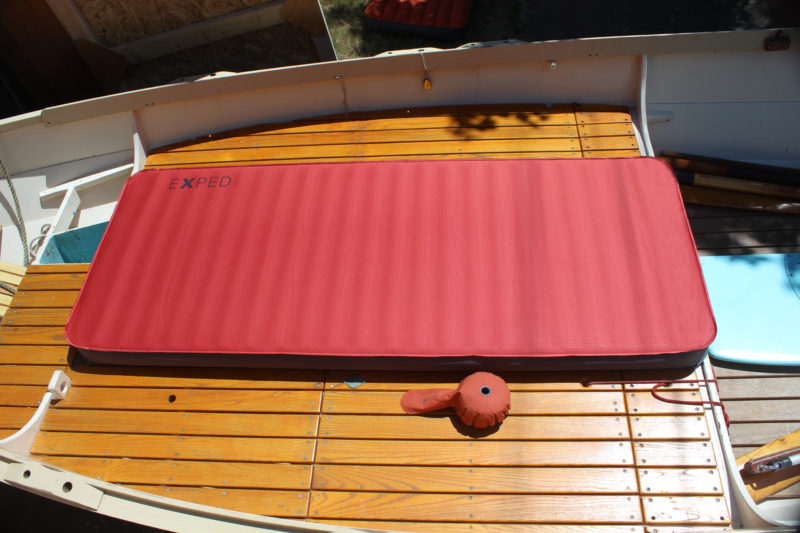 SBM
SBMThe Megamat needs to self inflate for about 30 minutes before getting topped off in about a minute with the included mini hand pump.
I was keen to see if Exped’s Swiss technology could make a sleeping mat that would suit my needs. The Megamat 12 is the biggest sleeping pad in a stuff sack I’ve ever seen. Nicely designed with horizontal baffles and padding that create a flat surface, it is quiet, warm, and without sharp fabric and plastic edges. In about a half hour it self-inflates to a full 4″ thick, and then you top it off with the included mini pump. After you get aboard you use the deflation valve to adjust firmness. You can get a soft contour-accommodating fit without bottoming out. The mat’s internal polyurethane foam is an effective barrier to ground chill—the mat has an R-9.5 rating and is recommended for use in temperatures down to –54 degrees F.
Deflating and rolling it up small enough for the stuff sack was a bit of a chore for this 130-pounder. I’d consider getting a larger sack for it. Exped recommends the Megamat as a base-camp or camper-van mat, but if you have a large tent, cockpit, or cabin and room to stow the rolled-up mat, it will please even the fussiest princess. Even I had a good night’s sleep on it. It easily passed muster.
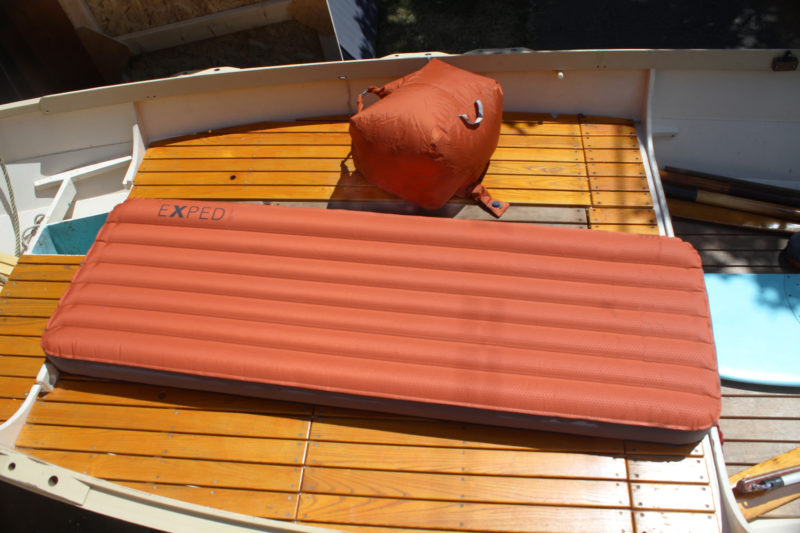 SBM
SBMThe Synmat Mega is inflated by means of a bag called a Schnozzel Pumpbag that comes with the mat. It takes about 90 seconds and three fillings of the Schnozzel to bring the Synmat Mega up to a firm pressure
The Synmat 12 is a more compact mat. Packed in its stuff sack, it has the circumference and length of a football. The bag has a clever sewn-in flap on one end that I can grab for pulling it off the fold-and-roll mat. I took the Synmat 12 with me for a solstice row and made camp at 5:30 a.m. Inside my tent, I inflated the Synmat with Exped’s Schnozzle, a roll-top, ripstop-fabric dry bag that captures up to 3 cubic feet of air that you can squeeze into their sleeping mats. It spares you a lot of dizzying huffing and puffing, and avoids filling the mat with moist, mold-prone air from your lungs. In my sleeping bag I can adjust firmness of the mat with the deflation valve at my head to meet my body’s needs at the end of a long rowing day.
The mat’s fabric is quiet, and it has raised side baffles to keep you from sliding off it. The five central air chambers inflate to 4-3/4″; the two outer chambers go to 6″. Its microfiber insulation has an R-5.3 rating, good for temperatures down to -4 degrees F. You can feel the warmth reflecting back at you moments after lying down on it. I woke from my two-hour morning nap well rested, wanting to stay in the comfort of a bed that fit my body like a glove.
Excellent quality and smart design can be a challenge for my wallet, but if they lower the risk factors arising from lousy sleep, the expense is worth it. At $200+, Exped’s Synmat 12 is a no-brainer, and I can easily stow it for rowing. If you have a bigger boat with room for the Megamat, it too is a wise investment.![]()
Dale McKinnon began rowing in 2002 at the age of 57 and in 2004 rowed solo from Ketchikan, Alaska, to her home town, Bellingham, Washington. In 2005 she rowed from Ketchikan to Juneau.
The Megamat 10 LXW and the Synmat Mega 12 LW are priced at $219 . Exped products are available through a number of retailers in North America.
Editor’s notes:
I had an opportunity to try the repair kit on a very small pinhole in the side of a Synmat. The textile glue in the repair kit included with each mat was all that was required to seal the hole. While a single application of the glue, followed by a self-adhesive patch, is recommended as a quick fix, I had time to do the long-term repair of three applications of glue, which doesn’t require the patch. When the glue dried the repair was complete; it took just 15 minutes.
I tested a second Synmat by inflating it, setting a stiff panel on top of it and adding 100 pounds to that. The mat showed no signs of losing air during the week it had the weight on it.
To get both mats rolled up tightly, it makes a big difference to roll the mat up once, squeezing out most of the air, then unroll the mat and roll it up again. The second rolling gets the last bit of air out and the mat will then fit easily into its stuff sack. I’ve been doing the second rolling with self-inflating mats since I bought my first one back in the ’70s.
Is there a product that might be useful for boatbuilding, cruising or shore-side camping that you’d like us to review? Please email your suggestions.

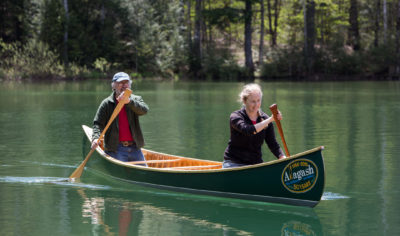
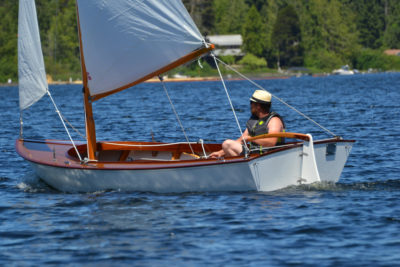
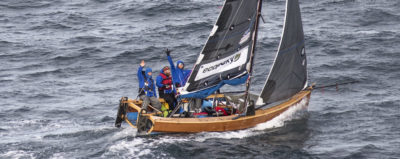
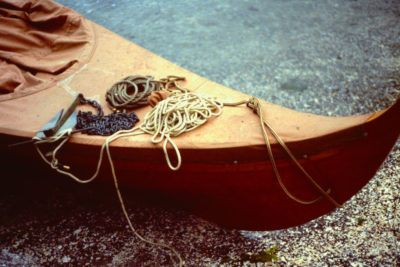
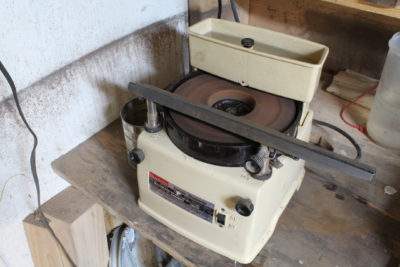
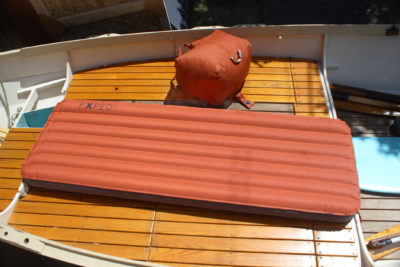
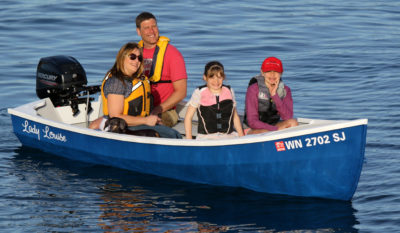

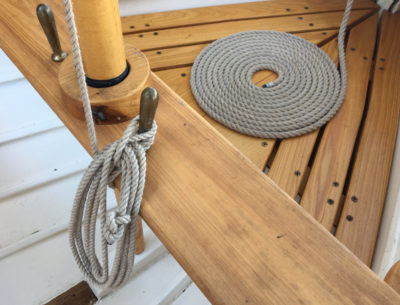
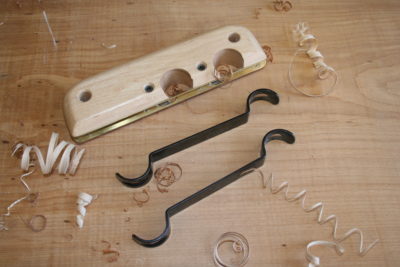

Join The Conversation
We welcome your comments about this article. If you’d like to include a photo or a video with your comment, please email the file or link.